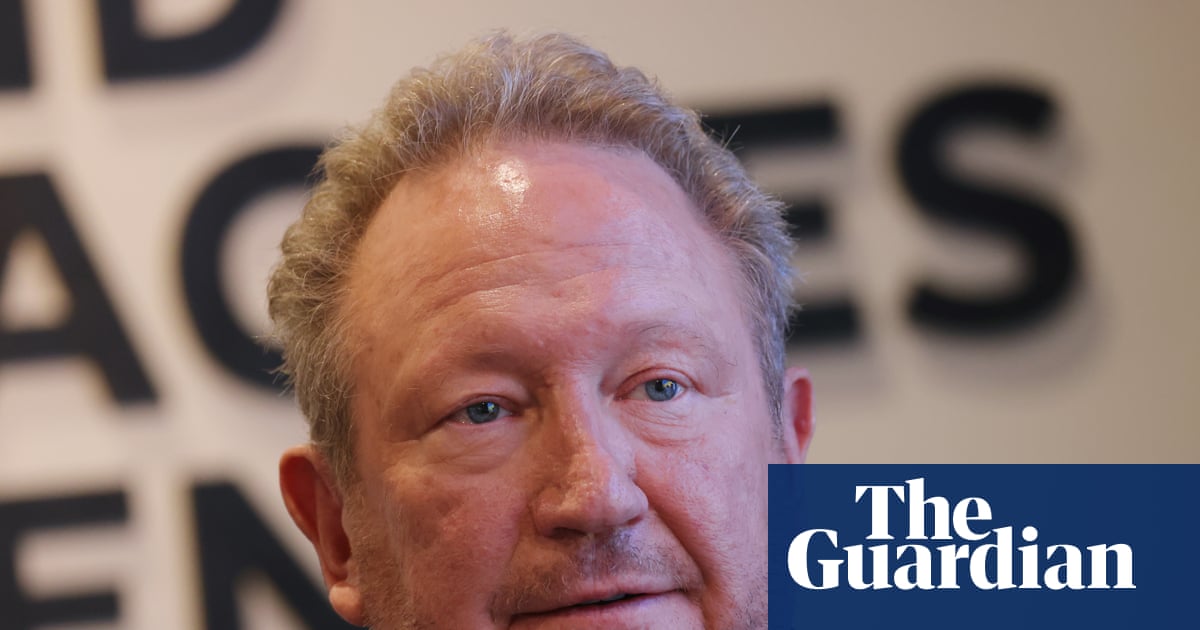The iron ore magnate Andrew Forrest’s Fortescue company has cancelled two major green hydrogen projects, laying some of the blame on the Trump administration’s shift away from renewable energy.
Fortescue’s decision to cancel the two ventures in Queensland and Arizona are the latest in a run of canned hydrogen projects in Australia and elsewhere that will raise further questions about the future of the clean fuel.
Gus Pichot, the chief executive of growth and energy at Fortescue, said a “shift in policy priorities away from green energy” in the US had “changed the situation” for its reported US$550m green hydrogen production plans in Arizona.
“The lack of certainty and a step back in green ambition has stopped the emerging green energy markets making it hard for previously feasible projects to proceed,” he said.
At the same time, Fortescue said it was cancelling its Gladstone PEM50 project in Queensland that had been slated to produce up to 8,000 tonnes of green hydrogen a year.
Pichot said this was down to the company’s “strategic shift away from electrolysers to focus on advancing technologies to provide low cost hydrogen for green industry in Australia”.
Electrolysers use electricity to split water into hydrogen and oxygen. Using renewable energy to power an electrolyser can manufacture a zero emissions liquid fuel.
Sign up: AU Breaking News email
Fortescue said it was looking at alternative uses for its sites in Arizona and Gladstone, and Pichot added that “green energy and green hydrogen is key to our future”, and while costs would come down “we must also be realistic and disciplined”.
The company’s green metals project in the Pilbara was progressing, Pichot added.
Simon Nicholas, a global steel sector analyst at the Institute for Energy Economics and Financial Analysis, said: “There has clearly been way too much hype, and politicians and policies have been far too distracted by nonsensical uses of green hydrogen – things like household heating, or adding hydrogen into the gas distribution network, and electric vehicles are clearly winning the race [against hydrogen cell vehicles].”
He said subsidies provided to the industry needed to be more targeted for green hydrogen for domestic use and for uses that “made more sense” such as in replacing hydrogen derived from gas used for fertilisers or in steel production.
A spokesperson for the federal industry minister, Tim Ayres, said the Gladstone announcement was “disappointing for the workers and businesses connected to the project”.
“But we know green hydrogen is essential to manufacturing and industry in a net zero future, and Australia has one of the best hydrogen development opportunities in the world,” the spokesperson said.
The federal government has provided $44.9m for a seperate Fortescue project – the Gladstone Electrolyser Facility – under its modern manufacturing initiative. The Guardian understands there could be flow-on impacts from the closure of PEM50 to that grant.
The spokesperson said the department was “continuing to work with Fortescue on its delivery of the Gladstone Electrolyser Facility project”, which is located at the same site as PEM50.
They said it was normal practice for grant agreements to allow the government to recoup funds if a project can’t deliver what was agreed to.
A statement added: “Government support in developing hydrogen opportunities around the country provides additional certainty for projects, however how they progress ultimately remains a commercial decision for the parties involved.
“Standing up a new industry is not easy, but we’re unapologetic about pursuing opportunities so regional communities continue to thrive through the energy transformation.”
